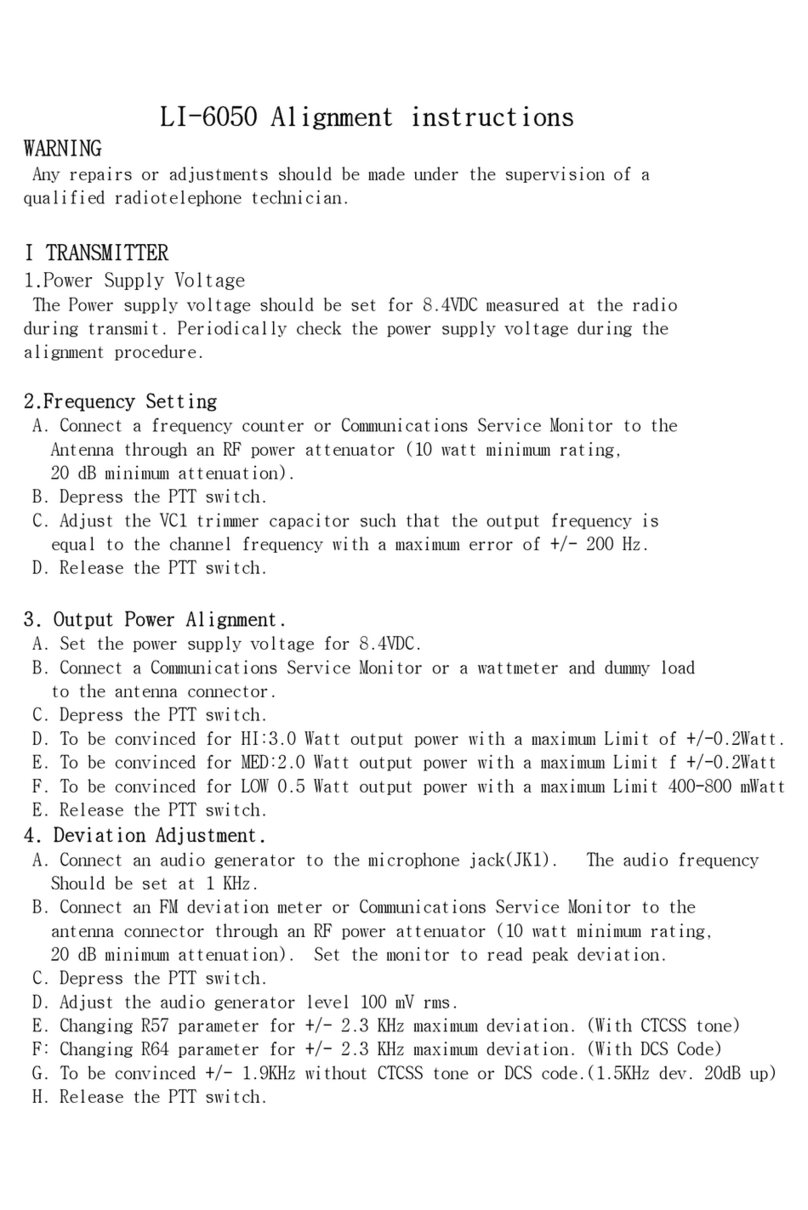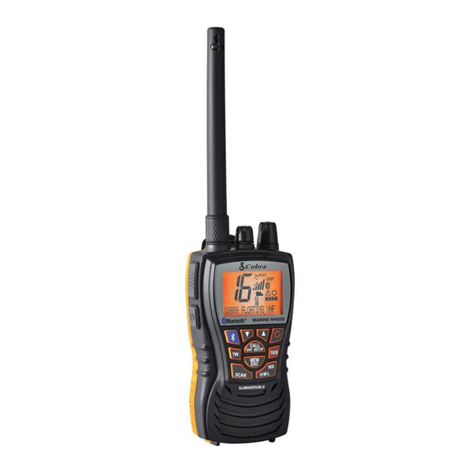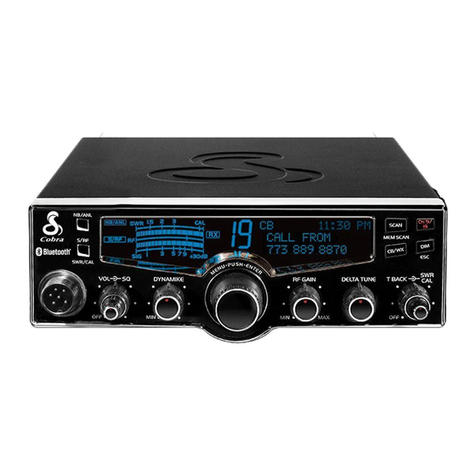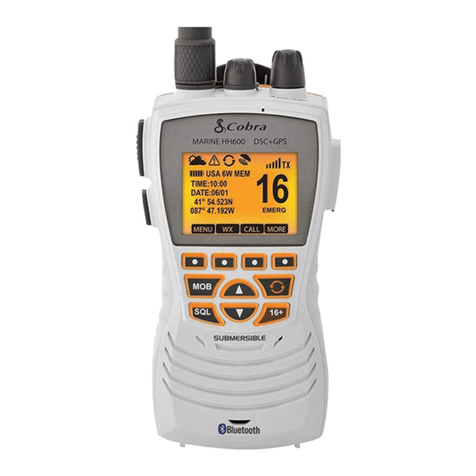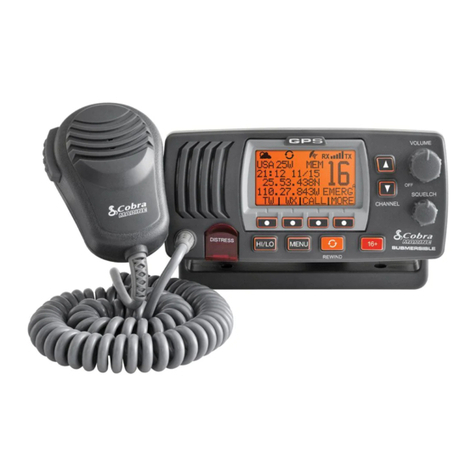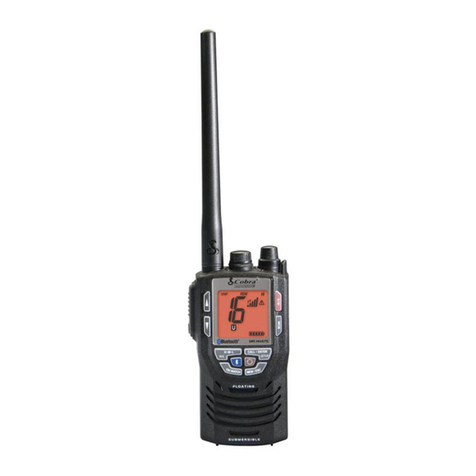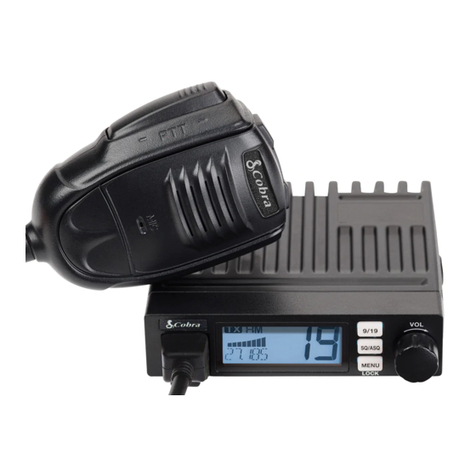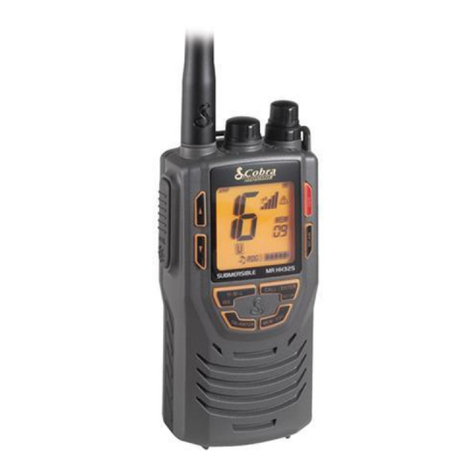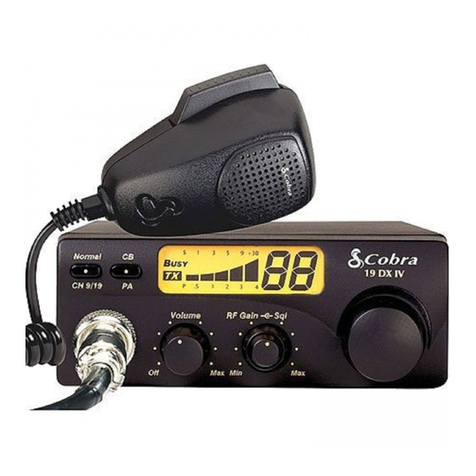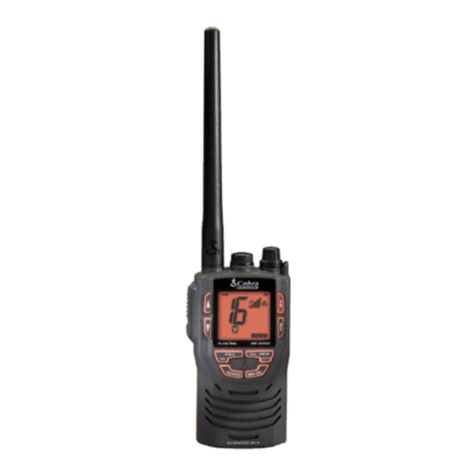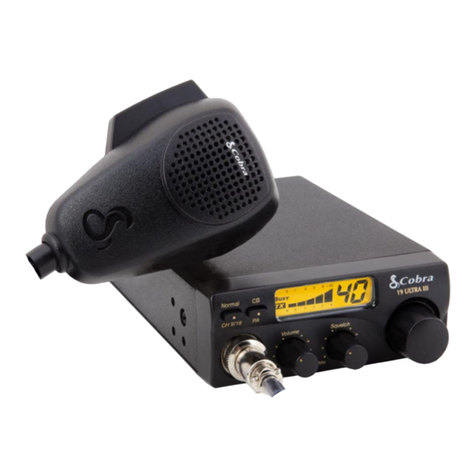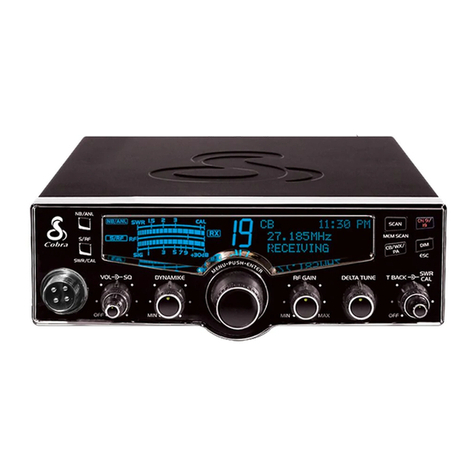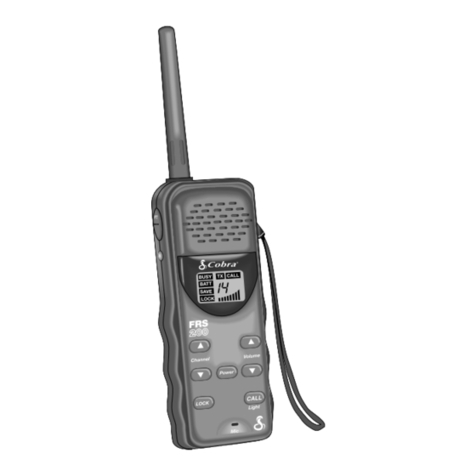is filtered by another low-pass filter circuit which consists of C91, L13, C84, C80, L12, C83, C70, L11
and C67. These low pass filters are necessary to suppress the second and third harmonics. The
signal is then fed into the antenna input and radiated out. TX current converts into a voltage signal,
then fed into U3 LM2904 (1/2) for amplifying. After that the signal passes to U3 (2/2) to control the TX
power.
Receiver
The receiver uses a double frequency super-heterodyne circuit. The first Immediate Frequency (IF) is 21.4
MHz and the second is 450 kHz.
UHF
The RF signal is received by the antenna, and passes through a low-pass filter network L1, C54, C1, L2,
C58, C63, L10, C59, C55, and L37 to filter out the unwanted signals, the antenna switching circuit D7
switching circuit to receive. Then passes through a hi-pass filter network C164, L38, C165 to filter
out-of-band signals. The RF amplifier Q7 amplifies signals within the range of the frequency coverage
and passes though a saw filter F6 to further filter out-of-band signals. The RF signal then is mixed with the
local oscillation frequency by the mixer Q8. A first IF (Immediate Frequency) 21.4 MHz is produced.
The IF is passed through a band switch D13 and a pair of crystal filter F3 (1/2), F4 (2/2) to further filter
other unwanted signals.
VHF
The RF signal is received by the antenna, and passes through a low-pass filter network L11, C67, C70,
L12, C83, C80, L13, C84, C91, L16, C108 to filter out the unwanted signals, the antenna switching circuit
D4 switching circuit to receive. Then passes through a match network C85, L19 of F1. F1 filters the
unwanted signals. The RF amplifier Q3 amplifies signals within the range of the frequency coverage and
passes though a saw filter F2 to further filter out-of-band signals. The RF signal then is mixed with the
local oscillation frequency by the mixer Q15. A first IF (Immediate Frequency) 21.4 MHz is produced.
The IF is passed through a band switch D13 and a pair of crystal filter F3 (1/2), F4 (2/2) to further filter
other unwanted signals.
The first IF then is amplified by Q6 and the IF amplifier U1 (BA4116). U1 is a integrated RF amplifier
which consists of a local oscillator, a demodulator, a second mixer, squelch control circuit, and RF
amplifier. The 21.4 MHz IF then is mixed here with second mixer and converted into 2nd Immediate
Frequency (IF) 450 kHz. The 2nd IF passes through a ceramic filter F5 to filter out the residue unwanted
signal at pin 5 of U1 (BA4116) output this final IF signal and the Audio signal is output at pin 9 of U1
(BA4116). The audio signal is fed through a 300Hz hi-pass U8 (LM324), after that passes to a switch U13
(NJM4053). When switch U13 passes audio to volume control VR4, the audio finally amplified by Audio
amplifier U14 (NJM2070) and heard in the speaker. The squelch control is also controlled by U1 (BA4116).
